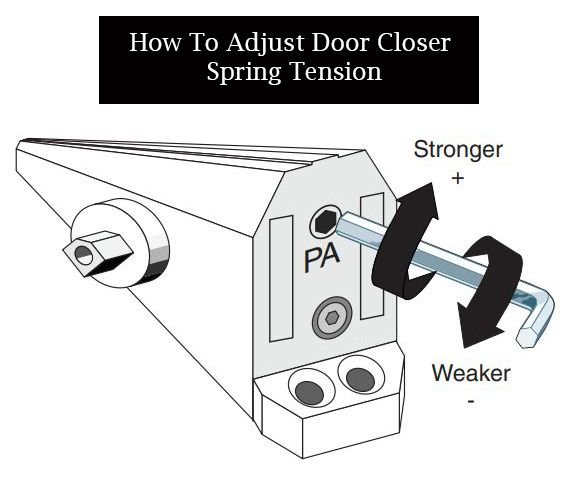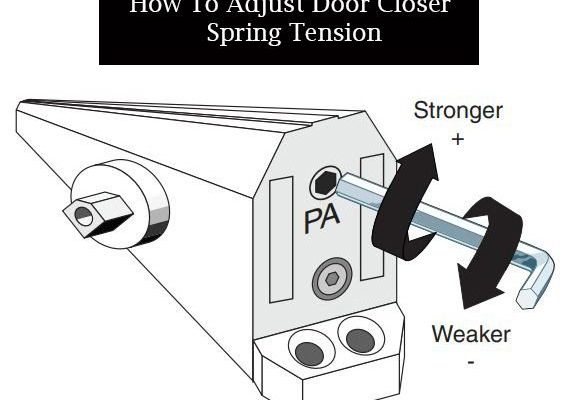
Think of the door latch bolt as the heart of your door’s locking mechanism. If the tension is off, it won’t latch securely, which could lead to security issues or the door not closing at all. Imagine a car that won’t start because the battery is weak. Similarly, a door latch bolt without the right spring tension can cause a lot of frustration. You want to ensure it’s functioning properly, especially if you have a specific brand and type of door latch in mind, like the Schlage or Kwikset.
So, how do you go about testing that spring tension? Let’s break it down step by step. You might be wondering if you need any special tools. Spoiler alert: you don’t. Just a little bit of time and some simple instructions will do the trick!
Understanding Your Door Latch Bolt
Before diving into testing the tension, it’s essential to understand how a door latch bolt works. At its core, a latch bolt is a metal piece that extends from the door into the frame to secure it. The spring is what allows the latch to return to its resting position after being pushed in. If the spring tension is too weak, the bolt may not catch properly, leading to a door that won’t stay closed.
Here’s the thing: most latch bolts work in a similar way, but there can be variations between brands. For instance, Kwikset and Schlage may have different mechanisms, but the basic idea remains the same. When you press the handle, it compresses the spring, and the bolt retracts. Once you release the handle, the spring should push the bolt back into its original position quickly and firmly.
Testing the *spring tension* is crucial not just for security, but also for convenience. A properly functioning latch bolt makes opening and closing your door a breeze, while a faulty one can lead to repeated frustrations. If you’ve noticed your door sticking or requiring extra force to latch properly, it’s time to take action.
Gathering Your Tools
You might be wondering what tools you’ll need for this task. Good news—testing the spring tension of a door latch bolt is straightforward and requires minimal equipment. Here’s what you’ll need:
- Screwdriver: A flat-head or Phillips, depending on your latch screws.
- Tape measure: Optional, but it can help if you want to measure the bolt’s depth.
- Pen and paper: For taking notes on any adjustments you make.
Honestly, that’s it! You won’t have to break the bank or run out to buy fancy gadgets. Just your basic toolbox should suffice. With everything in hand, you’re ready to check that spring tension and ensure your door latch functions as it should.
Inspecting the Door Latch
Now that you have your tools, the first step is to inspect the door latch. Start by opening the door and checking the latch position. Look for any signs of wear or damage. If the latch bolt has visible rust or is bent, you might need to replace the entire latch. But let’s assume everything looks good; there’s just an issue with the tension.
With your screwdriver, carefully remove the screws holding the latch in place. It’s essential to support the latch with your hand as you unscrew it to prevent dropping or damaging it. Once it’s loose, you can pull it out gently to check how the spring operates.
Here’s a tip: when you remove the latch, pay attention to how it fits together. You want to make sure you can reassemble it without any confusion later.
Testing the Spring Tension
Once you have the latch bolt out, it’s time to test the spring tension. This process is pretty straightforward. You’ll be compressing the spring to check how easily it moves and returns to its original position.
1. Compress the spring. Use your hand to push down on the latch bolt. You should feel resistance as you do this.
2. Release and observe. Allow the latch to return to its starting position. It should spring back quickly and firmly.
3. Assess the response. If the latch feels sluggish or doesn’t return to its position at all, the spring tension might be too weak.
You might need to adjust the tension if it feels off. Most latch bolts have a mechanism to tighten or loosen the spring. Check the manufacturer’s instructions for specific guidance on your brand. Adjust the tension as needed, and give it another test to see if the performance improves.
Reinstalling the Latch
After testing and possibly adjusting the spring tension, it’s time to reinstall the latch bolt. This part can be a bit tricky if you’re not careful, but here’s how to make it easy:
1. Position the latch back in the door. Ensure it’s facing the right direction—this is crucial for it to work correctly.
2. Insert the screws by hand first to avoid cross-threading. This step is important, as it can prevent damage to the latch or the door frame.
3. Tighten the screws carefully, making sure not to overtighten them, as this could bend the latch.
Once the latch is back in place, test it a few times to make sure everything works smoothly. If there’s still an issue, you might want to double-check the spring tension again or look for other underlying problems with the door or latch itself.
Common Problems and Troubleshooting
Now that you know how to test the spring tension, let’s touch on some common problems you might encounter. Recognizing and addressing these issues can save you from future headaches.
– Sticky latch: If your latch sticks, it could be due to dirt buildup. Clean the area around the latch and apply a little lubricant to the moving parts.
– Door misalignment: Sometimes, a misaligned door can cause tension issues. Check if the hinges are loose or if the door frame has shifted.
– Frequent jamming: If the latch is jamming often, it might indicate a deeper mechanical issue. Consider replacing the latch if simple fixes don’t work.
Don’t be discouraged if things don’t work perfectly on the first go. Home repairs often require a bit of patience. Just like tuning a musical instrument, sometimes it takes a few adjustments to get everything in harmony.
Final Thoughts
Testing the spring tension of a door latch bolt isn’t just about keeping your door functional; it’s about ensuring your home feels safe and secure. A weak latch can lead to frustration every time you try to open or close your door. By following these steps, you can easily check the tension and make informed adjustments.
You might find it empowering to handle these kinds of repairs yourself. It not only saves you time and money but also gives you a sense of accomplishment. So, the next time you notice a stubborn latch, remember this guide. With a few basic tools and some patience, you’ll be well on your way to a properly functioning door latch that keeps your home secure and accessible.
